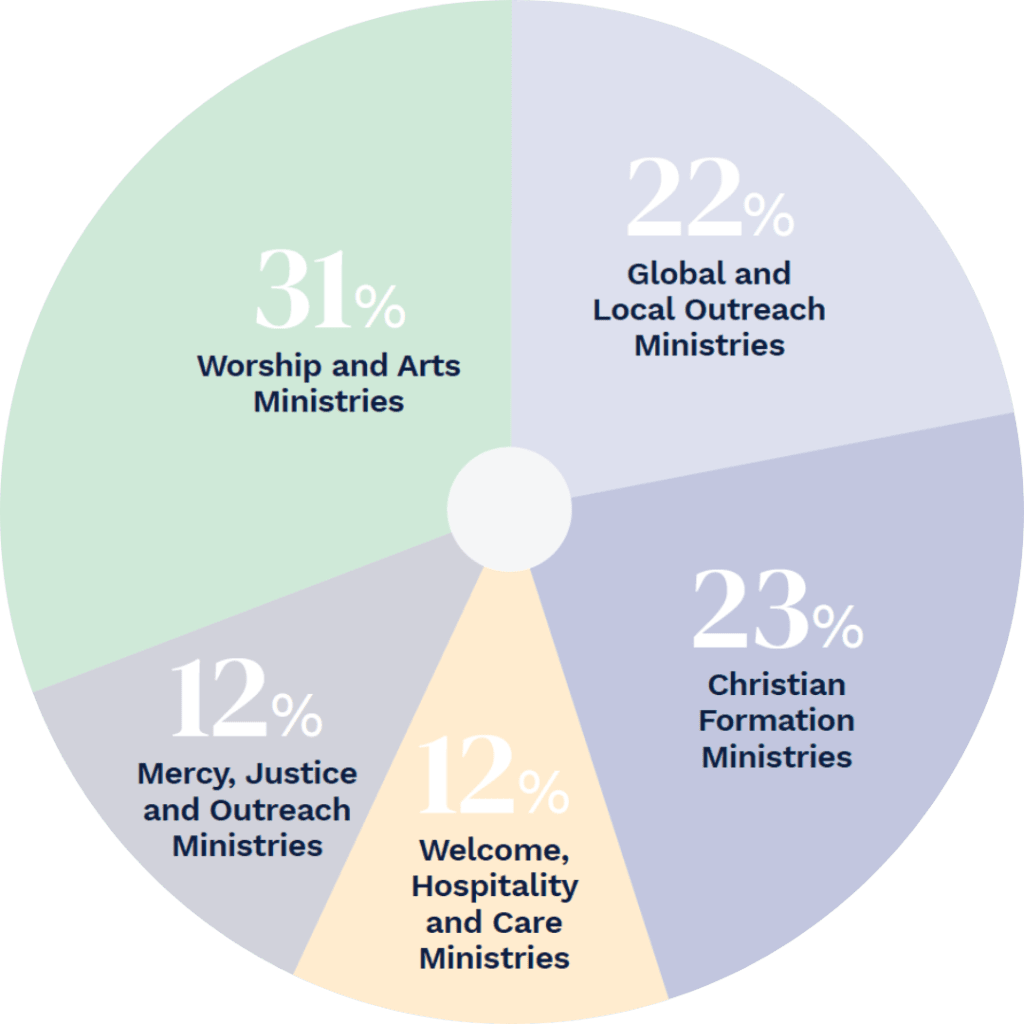Tell the Story!
Tell the story that your church is on mission—not “just” an institution to be maintained through staff, buildings, mortgage, and administration. And celebrate!
We are a people of God, continually responding to God’s call
Every congregation has its own compelling story of faith and impact. A narrative budget helps you clearly communicate that story and provides opportunities to see and celebrate how God is at work. The goal of a narrative budget is to paint a picture of a church’s mission and to inspire people to give, serve, and share more of the good news of Jesus.

What is a narrative budget and why use one?
A traditional budget consists of line items for salaries, utilities, property expenses, office supplies, etc. A narrative budget identifies four to six ministry categories and illustrates how all of the church’s giving impacts lives through those ministries. It is a story-focused means of demonstrating how funds given will be deployed to accomplish your church’s mission, transforming a line-item budget into a compelling picture of mission and ministry. A narrative budget combines all expenditures into those ministry priorities and does not include specific categories for personnel, building operations, mortgage or administrative expenses. Instead, it prorates such expenses into the ministry categories they serve, drawing a straight line between giving and spending so that budget discussions can stay focused on mission priorities and impact.
You will still need a line-item budget for accounting purposes, but it is a mistake to ask the congregation to vote on a line-item budget. A narrative budget is mission-focused and can be included in your outreach packet for newcomers.
Advantages of a narrative budget
- Closely connects the mission of the church with the budget.
- Keeps the focus on how God is at work.
- More clearly represents how expenses for personnel, building and maintenance costs, operational expenses, etc., are used to support mission and ministry.
- Can help avoid arguments over small amounts of money and minor issues.
- Acknowledges that a line-item budget is an accounting tool, not a picture of the church’s vision.
How to Create a Narrative Budget
- Review your mission statement to make sure it clearly states who you are and what you care most about.
- Identify 4-6 main areas of mission and ministry (which usually involves combining some categories). Areas in Covenant churches often include:
- Evangelism and Missions
- Worship and Arts
- Mercy and Justice
- Christian Formation (all ages)
- Care and Hospitality
- Write a short statement explaining the purpose of each area (1-2 sentences). List examples of what your church is doing in each area, as well as new aspirations.
- Prorate expenses in each area, such as staff salaries and benefits, building use, mortgage costs as a percentage of building use, administration, etc. For instance, if the senior pastor spends 30% of her time on worship-related issues, then 30% of her employment costs are placed in the Worship and Arts area. Prorate the cost of building, utilities, mortgage, office equipment, etc., that support each ministry area. This may require some educated guesses. IMPORTANT: Categories such as personnel, building and grounds, operations, etc., never appear as discrete categories in a narrative budget.
- You may choose to develop methods to demonstrate volunteer hours for each ministry area if the congregation wishes.
- Create a line-item budget for accounting purposes to be used by the board (council, leadership team) and staff.
- Send a letter to the congregation ahead of your annual meeting explaining that a narrative budget will be presented. See sample letter >> At the meeting itself, explain that a line-item budget is available in the church office upon request.
- Expect some questions, and be ready to explain why a narrative budget is important in helping the church stay focused on mission. Celebrate the good ministry that is happening with short testimonials when possible.
Resources
How to Create a Narrative Budget in Your Church >>
Center for Faith and Giving >>
“A Simple Step-by-Step Process for Creating a Narrative Budget,” by Bonnie Ives Marden >>
“Building a Narrative Budget” from United Method Synod of Wisconsin >>
Rev. Dr. Katie Hays, founding pastor of Galileo Church in Mansfield, TX, shares the ideas behind and some of the practical “how to” aspects of creating a narrative (mission) budget.




